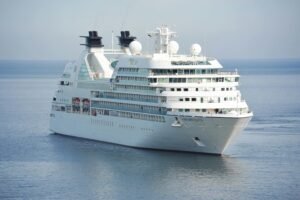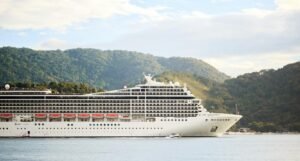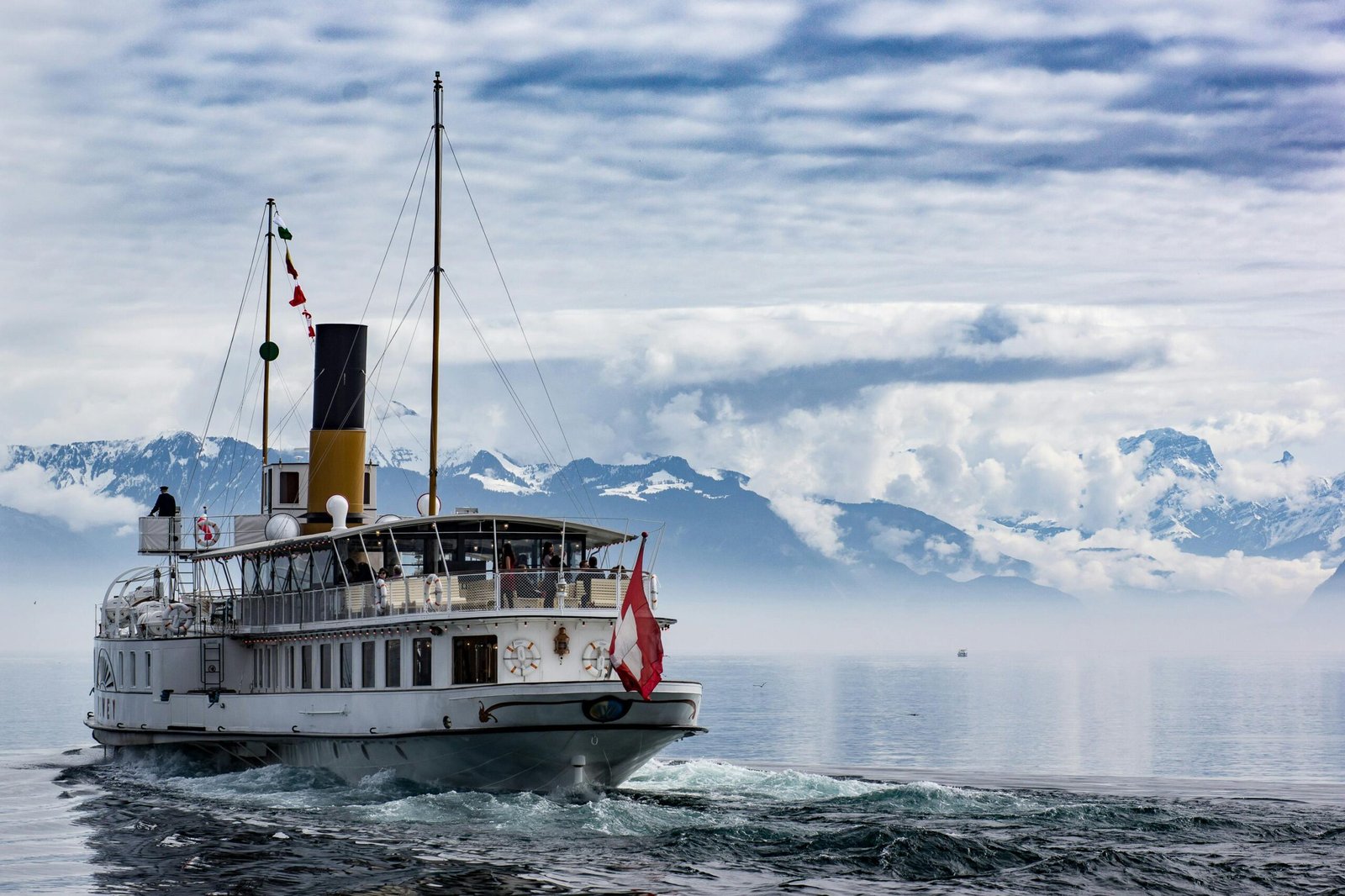Google Earth Cruise Ship Tracking
Real-time tracking of a cruise ship previously meant waiting for occasional updates and routes that were puzzle-like. Today, using Google Earth in conjunction with live AIS (Automatic Identification System) information, you can accurately track a vessel’s location, direction of travel, speed, and recent path in color 3D. Whether you’re tracking a family member’s adventure, watching over schedules, or just interested in maritime technology, this article offers an in-depth examination of cruise ship tracking—how it operates, what devices to utilize, and what is possible within its boundaries.
What is Cruise Ship Tracking?
Cruise ship tracking is the act of tracking the current position, speed, direction, and status of cruise ships with marine navigation technology. It is based on:
AIS (Automatic Identification System):
- Transmits ship information such as ID, location, speed, destination.
- Required for passenger vessels by maritime laws.
GPS:
- Delivers satellite-based ship location.
- Land‑based and satellite AIS receivers:
- Receive AIS information and transfer to servers or apps.
Mapping platforms (such as Google Earth):
- Project AIS data onto satellite and 3D sea maps.
- KML/KMZ files or APIs:
- Provide external platforms to access Google Earth layers.
Cruise ship tracking delivers visibility into vessel movement and itinerary vectors in a precise, user‑friendly way. Users can visually follow a cruise in near real time.
Why Use Google Earth for Cruise Ship Tracking?
3D Visualization & Context
Google Earth offers high‑resolution satellite imagery, 3D terrain, coastal detail, and port structures. This 3D environment lets you:
- Zoom in on decks and piers.
- Understand surroundings like islands or marine traffic.
- Enjoys ship scale and close proximity to landmarks.
Overlay Real-Time Data
Overlay AIS feeds straight on the map to display live location, route trails, speed, and direction. Provides context—what’s occurring, where, and why.
Cross-Platform Access
Access Google Earth on desktop and mobile (through companion apps). Integrate with AIS APIs, KML overlays, and live feeds for open access in the UK, USA, and around the world.
Informational & Emotional Value
Families: Locate loved ones on travels.
Enthusiasts: Observe maiden voyages or repositioning cruises.
Journalists & logistics groups: Track delays, port of arrival, or weather effects.
How It Works: Step‑by‑Step
1. Automatic Identification System (AIS)
All passenger ships have an AIS transponder on board.
It sends:
- MMSI (Maritime Mobile Service Identity)
- Position (lat/long via GPS)
- Speed (knots), course over ground
- Destination, ETA, vessel name/size
2. AIS Reception
- Land‑based AIS stations: Coastal towers collect signals within 20–40 nautical miles.
- Satellite AIS: World coverage, particularly farther out.
- Stations send data to central servers in real time.
3. Data Aggregation & Distribution
- AIS data received by providers such as MarineTraffic, VesselFinder.
Some provide free browser‑accessible feeds; premium versions include:
- More frequent update rate (5–15 s)
- HD maps
- API access
- KML export for Google Earth
4. Integration with Google Earth
- Utilize KML/KMZ overlays or API feeds within Google Earth Pro/desktop.
- These show up as placemarks, routes, and vessel icons.
- Mobile solutions: apps exporting to .kml overlays useable in Google Earth companion apps.
5. Coverage & Accuracy
- Update interval: 5–30 seconds
- Accuracy: GPS±5 m, AIS position error minimal
- There are gaps offshore if land AIS reception is not possible; satellite AIS covers those areas.
- Free services usually indicate 30–60 second delay; paid ones are near‐realtime.

Tools & Platforms That Integrate with Google Earth
Although AIS data doesn’t have a native origin in Google Earth, there are several third‑party sites offering KML export or integration:
Popular Platforms
MarineTraffic:
- Good UK and USA coverage, free web maps.
- Pro/KML access for Google Earth.
CruiseMapper:
- Specialises in cruise ships, routes, fleet fleets.
- Displays 3D route information for chosen ships.
VesselFinder:
- Global AIS data with KML export for desktop mapping.
- myShipTracking:
- Lightweight AIS viewer with shareable KML links.
ShipCruises:
Cruise-specific routes with timeline overlays via KML.
Features Breakdown
Free vs. Paid
Free: shows basic position, vessel name, type.
Paid: adds speed, heading, route trails, update intervals, vessel photos, alerts.
UK/USA Port Coverage:
Primary areas such as Southampton, Miami, Los Angeles—high-density AIS infrastructure → improved accuracy and timeliness in tracking.
These tools make it easy to export KML files that can be imported into Google Earth desktop for immersive tracking.
Tracking On‑the‑Go: Desktop vs. Mobile
Desktop (Windows, macOS, Linux)
Google Earth Pro:
- Import KML.
- Utilize network links for live AIS updates.
Features:
- High‑resolution imagery.
- 3D vessel tilt visualization.
- Measuring devices (speed, distance).
Mobile (iOS & Android)
Google Earth application:
- Can read .kml overlays (downloaded or network-linked).
- Nice for route snapshots, less interactive than desktop.
- MarineTraffic / VesselFinder applications:
- Use built‑in maps; premium versions have smart tracking alerts.
Voice‑search:
“Hey Google, where’s ‘Queen Mary 2’ currently?”
Opens result with up-to-date ship information; quick answers.

Accuracy, Privacy & Limitations
AIS Coverage Gaps
- Land-based AIS: Up to ~40 nm off; further requires satellite reception.
- Satellite AIS: Worldwide but potentially has latency or message collision problems.
- Real‑time delay in off‑shore sea areas.
Data Update Intervals
- Free services: 30–60 sec.
- Premium: 5–15 sec.
- Satellite AIS: ~1–5 min interval.
Privacy & Legal Restrictions
- AIS is legally mandated on passenger ships (SOLAS), and frequencies are public.
- Certain ships can switch off AIS for sensitive maneuvers; not practicable on cruise ships.
- Vessel privacy: Tiered positional updates are available, but generally for private yachts or naval.
- GDPR (UK/EU) vs CCPA (USA) not directly invoked by AIS data—they’re vessel, not personal.
Limitations Summary
- No real-time cabin webcam streams—just ship position and status.
- Subject to third-party AIS data availability.
- Heavy port city imagery might be slightly out of date in certain coastal regions.
Use Cases: Real‑Life Examples
Family Monitoring
Parent can monitor a daughter’s Mediterranean cruise:
- Import cruise line’s route KML into Google Earth.
- Overlay real-time AIS to view precise position and ETA.
- Voice-search: “Hey Google, where is Carnival Vista now?”
- The 3D view provides definite visual comfort.
Delays & Weather Monitoring
- Monitor storms or fog impacting Atlantic crossings.
- Compare live speed to route timeline.
- Departures are usually delayed by cruise lines; highlighted in HUD.
Enthusiast & Fan Tracking
Observe inaugural sailings visually:
- Route overlays with AIS in Google Earth allow enthusiasts to track maiden sailings in real-time.
- “Where is Norwegian Joy right now?”
Tips for Better Tracking
- Utilize network connections in Google Earth Pro to auto-reload AIS 15–30 seconds.
- Select “Show historical trail” in KML to see recent path over past hours or days.
- Filter by ship type (“Passenger”) or cruise line to reduce noise in congested ports.
- Utilize search terms such as “red cruises cruise ship” to filter.
- Make pausing of overlays on heavy interaction (e.g., globe spinning in smartphone app) an option.
- If offline, download .kml snapshots prior to cruise onset for later review (e.g., Maldives vacation).
Frequently Asked Questions (FAQs)
How accurate is cruise ship tracking in Google Earth?
Google Earth tracking is based on AIS + GPS, so accuracy is generally within 5–10 m. Update intervals and offshore coverage (land vs. satellite AIS) do, however, introduce delays up to several.
Can I track my cruise on my phone?
Yes. Utilize apps such as MarineTraffic or VesselFinder for live tracking or export .kml overlays that are supported by the Google Earth app. Voice‑search even permits queries such as “Where is MSC Meraviglia now?”
Is cruise ship tracking legal?
Absolutely. AIS transmissions are required and open. Tracking cruise ships for general interest, family safety, or route following is permissible. Disabling AIS is uncommon for passenger ships and only for security purposes.
What is the distinction between AIS and satellite AIS?
- Land AIS: Low-latency, real-time information for vessels in ~40 nm of land.
- Satellite AIS: Offshore global coverage with delayed and intermittent message loss from signal collision.
Is there a price for live tracking?
Basic position is gratis. Real-time tracking at high refresh rates, historic trails, and access to the API typically mandates a paid subscription from providers such as MarineTraffic or VesselFinder.
Voice‑Search & Featured‑Snippet Ready Phrases
“How do I track a cruise ship with Google Earth?”
– Employ KML overlays or network links provided by sources such as MarineTraffic.
“Where is cruise ship Queen Mary 2 currently?”
– Ask voice assistant or Web utilities on apps with real-time AIS data.
“Is cruise ship tracking accurate?”
– Yes, GPS-based AIS offers positional accuracy of ~5–10 m, depending on data source.
Final Thoughts
Google Earth cruise ship tracking combines high-resolution satellite imagery with real-time AIS feeds to provide you with accurate, 3D visual understanding of ship movement. It’s legal, safe, accurate, and augmented by a global network of tracking tools and platforms.
Benefits Recap
- Real-time visualization: zoom, tilt, and track in high definition.
- Live speeds, courses, and route history for context.
- Cross-platform convenience: Mac, PC, Android, iOS—even voice assistants.
- Is packed with insights useful to families, media, logistics, and enthusiasts.
Final Recommendations
- Select a well‑established AIS provider that supports KML/network‑link.
- Use Google Earth Pro for optimal experience; mobile for convenience.
- Upgrade for near‑real‑time refresh, speed and route overlays.
- Investigate historic or offshore tracking with satellite AIS premium plans.
By learning how to track a ship using Google Earth, you can monitor loved ones or favorite cruise ships across seas, enjoy peace of mind, and enhance your appreciation for sea travel. Are you ready to give it a try? Begin with a free AIS provider, import its KML link into Google Earth, and observe your first cruise in real time.
